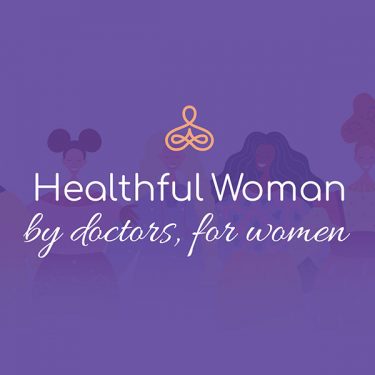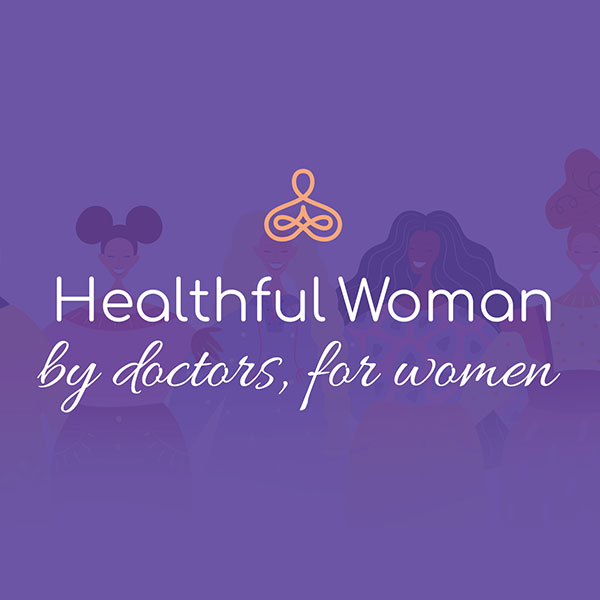Dr. Lam-Rachlin returns to Healthful Woman to explain different types of twins. She and Dr. Fox review the factors that doctors are concerned about with twins, how they can tell what type of twins are present, and more.
“Intro to Twin Pregnancies: Types of Twins, and Why it Matters” – with Dr. Jen Lam-Rachlin
Share this post:
Dr. Fox: Welcome to today’s episode of “Healthful Woman,” a podcast designed to explore topics in women’s health at all stages of life. I’m your host, Dr. Nathan Fox, an OB-GYN and maternal-fetal medicine specialist practicing in New York City. At “Healthful Woman,” I speak with leaders in the field to help you learn more about women’s health, pregnancy, and wellness. Dr. Jen Lam-Rachlin welcome back to the podcast. How are you doing?
Dr. Lam-Rachlin: Thank you for having me, Natey. I’m doing well, thank you.
Dr. Fox: You were just begging to be back on the podcast. You kept harassing me. I said, “Jen, come on. Enough already.”
Dr. Lam-Rachlin: Every day. You know me, I love speaking.
Dr. Fox: You love speaking. So yeah, you’re moving farther and farther away from me. So you’re not 60 blocks away from me, you know, to call you. But, you know, you can run, but you can’t hide. The podcast will always find you. But I do appreciate it. And we were going over potential topics and we both thought that this would be a good one because, you know, we see so many twin pregnancies and people know someone with twin pregnancy, or they have a twin pregnancy, but people don’t really, sort of, think about what we’re thinking and how do we assess what kind of twin pregnancy and what does that mean? And there’s a lot of confusion. So we thought it’d be good idea to try to, you know, maybe clear that up and help people understand how we think about twins to maybe get a better sense of, you know, how we may manage them differently.
Dr. Lam-Rachlin: Yeah. I agree. I think it’s an important topic. Obviously, we see a lot of twins and there are a lot of confusion in the, I guess, available literature for patients. And I feel like I do spend a lot of time during my consults with them to clear up some of the confusion. A podcast like this would definitely help.
Dr. Fox: Yeah. I mean, like for example, there’s all these different ways. There’s are the twins identical versus not identical? So people hear maternal versus fraternal or are there one placenta or two placenta? I mean, all these things and how are those related? And we’re gonna try to sort all that out. So it’s a little ambitious, but I think we’re gonna do it. And I think there’s…you know, twins are such an interesting topic that, you know, this is really just like step one. You know, we see someone in evaluating for twin pregnancy, this is literally the first thing we do before we make any more of the plan. So I thought it’d be a good place for our podcast to start.
Just for some background, you know, twins are common. Right now it’s about 1 in 30 births although it seems like, you know, patients I’d see, it’s like 1 in 3. We see a lot of twins. And they are more common as women get older. They’re more common with fertility treatments, also with family history. And in terms of different ways to think about twins, let’s first start with idea of like the genetics, you know, this identical versus not identical. So what does it mean for twins to be genetically the same or different?
Dr. Lam-Rachlin: You know, I think most people that’s not in our field would kind of classify twins as either are they identical are they a fraternal? Which basically means like, you know, identical twins, they are genetically the same. They start off one unifying cell and it’s split into twins, so genetically the same, versus fraternal, meaning that they are genetically different, right? So it could be that two eggs were fertilized and there were two different pregnancies, kind of, co-existing in the same uterus. As you know, from our field, it’s less important to know identical versus fraternal, more important to know how many placentas, how many sacs.
Dr. Fox: Yeah. I think that’s one of the things that people find surprising, that we always talk about whether we think they’re identical or not, but it really doesn’t matter that much to us. And, you know, in terms of just…when I try to explain to women, sort of, how do twins come about, right? In terms of like, naturally, let’s take fertility treatments aside, there’s really only two ways. The first way is, sort of, you have one egg and one sperm, right? And they meet, and that’s, you know, one pregnancy, it’s a zygote as it’s called at that time, but basically it’s gonna be one baby, and then that splits into two and that’s how you get identical twins or what some people call maternal twins, sometimes we call them monozygotic.
These are all fancy terms for twins that came from the same, you know, one…it’s not really a baby at that time, it’s an embryo or whatever, but it splits into two, and that’s why they have the exact same DNA. Identical twins at the same DNA because they came from the same egg and the same sperm. And the interesting thing about that is that event where one embryo splits into two, it’s the same across all populations, the likelihood of it happening. It’s not affected by family history, it’s not affected by age. It’s a completely random event, which is really interesting just from a scientific standpoint that it happens in the same frequency.
Dr. Lam-Rachlin: Exactly. The frequency hasn’t changed in the monozygotic twins. So it’s very unique and it could be a whole topic in and of itself on why it occurs.
Dr. Fox: Yeah. The only exception is actually for women who undergo IVF, even though there may be one embryo put inside the uterus, that embryo is more likely to split than in nature. Meaning in nature, it’s about 1 in 300, but with IVF, it could be 1 in 30 or 1 in 40. It could be 10 times higher. So it’s not that it commonly happens, but definitely much more frequent in IVF pregnancies. And so we always warn women if they’re having IVF, even if you’re only putting one embryo, sure, that’s gonna lower your risk of twins a lot, but it doesn’t make it zero. And, you know, again, it is really interesting, identical twins, all this, you know, sort of socially, it’s very interesting. They look alike, they think alike. Do they have this, you know, special connection and whatnot, but we don’t really get into that. It doesn’t really matter so much to us, except if we’re trying to, like, diagnose, you know, genetic, you know, conditions or not, we’ll know they’ll be the same or different.
The other way people have twins is that there’s actually two different eggs and two different sperm and it just happens to be that the mother ovulated two eggs that month and that is genetically related, right? So when you ask women about a history of twins in the family, you’re talking about that kind of twins. And those are the twins that we call either non-identical, or fraternal, or dizygotic. These are all the same thing and they’re genetically similar like siblings.
Dr. Lam-Rachlin: Technically they’re like 50% genetically normal and 50% not. But yeah. So they act more like siblings, only obviously they’re the same age, the same conception date.
Dr. Fox: Right. And they shared the same uterus.
Dr. Lam-Rachlin: Yes.
Dr. Fox: And now, the way this would be impacted by fertility treatments is if you’re having IVF and they put in more than one embryo, sure, you may end up with non-identical twins or the other ways that people have fertility treatments not related, they don’t have IVF, like they have other treatments like hormonal. So what happens there?
Dr. Lam-Rachlin: If they have a non-IVF type of hormone treatment, those types of treatments help patients ovulate, right? You have to ovulate, you have to release the egg to get pregnant to meet up with the sperm. And when they go through hormone treatments, sometimes they ovulate more than one egg. Let’s say, for instance, they ovulated twice and there’s two eggs that get released and both of those eggs can get fertilized by different sperms and then resulting in twin pregnancies. Worst-case scenario would be if there were more than two that ovulated and then you have these higher-order multiples, right, like in triplets and quadruplets, which thankfully has been less likely to occur given, kind of, the changes in terms of monitoring for these fertility doctors.
Dr. Fox: Yeah. It’s interesting. I think that there’s a misconception out there that for, you know, like Octomom and people will get pregnant with, you know, five, six, seven babies, the thought was that the IVF doctor put in five, six, or seven embryos. But that’s almost never the case. The IVF doctors are gonna put in one, maybe two, in the old days, maybe three. The way someone got pregnant with six, seven, or eight was they got injected with a ton of hormones and then just went off on their own and they happen to ovulate six, seven, or eight times in that cycle. And that was really how it happened. So people who are getting these hormones typically are monitored to make sure they’re not gonna ovulate that many. So, again, that distinction about whether twins are genetically the same, genetically not the same, as we said, is not really important to us. So what is it that is important to us in terms of twins?
Dr. Lam-Rachlin: Yeah. Most importantly for us is how many placentas, how many sacs, is there a separating membrane or are they in the same sac, same uterus, same placenta? I think placenta, sac, uterus, they’re kind of very abstract terms. Patients that are not in the medical field, right? And the best way that I would describe it is, you know, something called the dichorionic diamniotic twins are two sacs, two placentas, or it’s kind of the best analogy is two sibling twins that live in the same apartment complex, but separate apartments, right? They have their separate kitchen, they have their separate living space. They should not be in competition with each other in terms of nutritional source and space versus monochorionic twins which share the same placenta. So it’s like as if they live in the same apartment itself with one shared kitchen so there could be competition of nutritional source. If they’re monochorionic but diamniotic, they have two separate sacs. And so it’s like they have like two separate bedrooms versus, you know, mono-mono, which would be like living in a studio apartment with a twin pregnancy. It’s obviously much more complicated as we go down that line. And kind of the highest risk of twins will be obviously conjoined twins and, you know, the degree where it’s conjoined.
Dr. Fox: Yeah. I think that’s a really good analogy. Most women have one uterus, some with two. But basically one uterus. So both babies live in the same uterus but the placenta is sort of the thing that nourishes the baby. So it takes food, water, oxygen, all the stuff from the mother to the baby, or in this case babies, and if they each have their own placenta, it’s like each having their own refrigerator or kitchen, like you said, each have their your own food source and they’re not directly in competition one to the other. So it could be the one gets more than one gets less if, let’s say, one placenta works better than the other. That happens a lot in twins, but it wouldn’t be that if one…Like, if you and I are sharing a refrigerator and I take a lot of food from the fridge, you have less, right? And so whereas if we each have our own refrigerator, it’s different. And so that’s a really important one of the placentas and it is basically about supply of either food, or water, sometimes even blood specifically there’s conditions if they share a placenta.
And then what you’re talking about, the rooms, that’s the water bags, right? So the water bags is really just, everyone’s got their own space. And the reason that matters is if the twins are on the same water bag, which is unusual, but when it happens, they’re swimming around each other and their cords can get entangled. There’s no separation between them and that has its own set of problems. And so, yes, so we look at that and that’s really all we’re thinking about. Now, it happens to be that there is a relationship between those two, between how the placentas and membranes are organized and whether they’re identical or not, but again, it’s only the case that, you know, one sort of implies the other sometimes, but it doesn’t really matter to us if they’re identical, meaning you can have identical twins who share a placenta and you can have identical twins who don’t share a placenta. And the bigger issue with us is whether they share a placenta, not whether they end up being identical or not.
Dr. Lam-Rachlin: Yeah. I think the most common misconception is, you know, when someone’s told that they have di-di twins or two separate placentas, two separate sacs, that means that they’re fraternal and that’s not always the case. They could still be identical. But from a monitoring perspective, it doesn’t really change how we do the monitoring.
Dr. Fox: Right. Right. I actually have friends who growing up were clearly identical twins. I mean, look the same, talk the same, thought the same, acted the same. No one could tell them apart. And they’re like, “No, we’re not identical,” but like, “Get out of here, of course you’re identical.” But like, “No, we’re not identical because we had two placentas.” And in high school, you’re like, “Oh. That sounds pretty scientific. I guess you’re not identical.” Then I went to medical school and I learned this. I was like, “Ah-ha. You’re definitely identical. I knew it.” I knew it. All that time. I suspect they knew it too but for some reason didn’t wanna admit it.
So let’s talk about the way we think about it, like you said, the least risky of all twins, right? All twins are high-risk pregnancy, but the least risky of all twins are, like you said, the ones where there’s two placentas and each baby has his or her own placenta and his or her own water bag and we call those dichorionic, meaning two chorions or two placentas. Diamniotic, two amnions or two water bags. Unfortunately, the shorthand for that is di-di, which sounds horrible. We’re like, “Hey, you have di-di twins.” And people are like, “What? Like, what are you saying?” Like, “No, no, no, D-I just like…” Listen, we could tighten it up and make it better, but that’s just how it is. So that’s the lowest risk type of twin. So if you see pregnancy, and we’ll talk about how we know this, and you say, all right, there’s two placentas, two water bags. So what do you know? So can you know for sure whether they’re identical or not identical?
Dr. Lam-Rachlin: In general, no, unless they’re different genders, right? If one’s a male, one’s a female, then for sure they’re not identical, but if they’re the same genders like two boys, two girls, there’s not really a way that’s 100% failproof to say that they’re identical versus fraternal. There are genetic testings, whether via screening tests or invasive testing that tries to tease out whether they are genetically the same or not, but obviously, there are limitations of some of these testings.
Dr. Fox: Yeah. That’s been very interesting for us because, you know, we’ll see people with twins and again, that two placentas, water bags and, you know, let’s say it’s too early that we don’t know whether it’s a boy or girl yet. And we would usually think that they’re not identical, but sometimes they’ll say, “Oh, you know, I had IVF and they only put in one embryo.” We’re like, “Oh. Then they probably are identical.” Or there is this blood test now that can give you prediction of whether they’re identical or not. And it’s pretty accurate. It’s not 100%, but it’s a lot more accurate than you would expect. I mean, it’s really very good. But, again, it tends to be the lowest risk and you can’t tell for sure whether they’re identical or not. And so those twin pregnancies, we sort of manage as our standard twin pregnancies. And the nice thing is there’s no competition for food or for water in terms of one taking from the other. And also, in those types of twins, if unfortunately, something happens to one of the babies, it won’t affect the other. They’re literally just sharing, like you said, an apartment complex. They’re not even in the same apartment, they’re in the same building.
Dr. Lam-Rachlin: Right. Exactly. So from all the twins, these are “the best type of twins to have” because they are at the lowest risk of twins.
Dr. Fox: Right? Exactly. So that’s what we call di-di, or dichorionic, diamniotic. And the next level is when they each have their own water bag, so they’re in their own bedroom, so to speak, but they share one placenta. So we call that monochorionic or one placenta, diamniotic, two water bags, or mono-di, which is what we call them. Again, a little bit gruesome, but that’s what we call it. So why does that increase the risk? Right? What can happen in that kind of twins on top of what could happen in the first set of twins?
Dr. Lam-Rachlin: Yeah. So aside from just general twin complications, they’re sharing, as you said, the same nutritional source, same blood supply. So there could be competition of one getting more blood than the other or more nutrition than the other and really related to just how much sharing, equal or unequal sharing of that blood supply and then can translate into more complications such as, you know, twin to twin transfusion syndrome, which is something that we talk about a lot for mono-di twins, but there’s, you know, variety of different other nuances aside from TTTS, but it’s all related to geography of how much placenta they have or how much blood flow they get.
Dr. Fox: Yeah. And that’s a really important distinction because we’re always worried about, like you said, all twins, there’s, you know, there’s a risk of preterm birth and the risk of how they’re gonna grow and a risk of diabetes and high blood pressure. All these things is a risk for in twins, but when they have the same placenta, on top of that, we have to follow for those problems that are unique to having the same placenta, like you said, this twin- twin transfusion, and we’re gonna have a separate podcast on that alone. So we don’t have to go too deep into it, but it’s a problem. And it happens in, you know, whatever, 15% of these kinds of twins, but we have to monitor for it because it could be pretty serious. And one of the interesting things is essentially 100% of the time, if you see one placenta, they are identical, right?
It’s almost impossible to get one placenta from non-identical twins. It’s been reported, but basically, it doesn’t happen. And so for our end, yeah, we sorta know that and also if you’re are gonna do genetic testing, it should be the same, you know, one versus the other almost always, essentially. That is a higher level of risk and not a lot of people know that coming in to their twin pregnancy, they think all twins are the same. And these are clearly everyone, you know, in our world, those are way higher risks than the first set of twins.
Dr. Lam-Rachlin: Yeah. I agree. Aside from just the sharing of the placenta, as you kind of alluded to with the di-di twins, if something happens to one twin, generally the other twin is not affected, but in monochorionic twin pregnancy, if something happens to one twin, they can affect the surviving twin because they do share that blood flow.
Dr. Fox: And that is a unique circumstance. You know, fortunately, it’s rare, but if you have situations in pregnancy where let’s say…and it happens where one twin is thriving and doing great and the other twin is just not, there’s something wrong, either something genetically wrong with the baby or something, let’s say the placenta’s not working or, you know, something’s going on. If they don’t share a placenta and something happens to the baby, let’s say the first baby passes in utero, you know, it dies, it won’t directly affect the other baby. It’s very sad, but it won’t directly affect the other twin. But if they share a common blood supply and one of them dies inside, essentially, there’s a huge pressure shift in the blood flow in this and there’s a very high chance of it affecting the surviving baby. And so we don’t have the same options of like let’s wait and see necessarily that we would have if there’s two placentas. Again, these are not common things in twins, but it’s very important on our end in terms of counseling people what to do to know if they’re sharing a similar blood supply or not.
And tell me about why is it such a problem if they’re in what we call mono-mono, meaning one chorion, monochorionic, one placenta and also monoamniotic, one water bag. This is where they’re the two of them are in the same studio apartment. So why is it such a big deal if their cords are getting wrapped around each other?
Dr. Lam-Rachlin: Well, that’s primarily where they’re getting their blood supply from, their oxygen, and their nutrition. So if you can imagine like literally like two ropes tangled up together, you could cut off some of the blood supply to one or both twins. So there’s a higher risk of losing one or both.
Dr. Fox: Yeah. And these pregnancies are like crazy high-risk. They’re fortunately rare, but these are the kinds…the risk of stillbirth is so high that either by the third trimester we’re admitting them to the hospital and watching babies continuously. That’s what we do in our practice typically. There are others who just see them in the office every single day for testing, like literally, like, five days a week, six days a week, seven days a week or something. I mean, they’re watched so frequently because there’s a chance of something happening. They always get delivered early. I mean, they’re gonna be preterm. Even if everything goes perfectly, we’re gonna deliver them early before something terrible can happen.
And also, just one of the…sort of the way that identical twins can get different kinds of placentas, right? We said, identical twins could have two placentas, they could have one placenta, they could have the same water bag. It’s sort of based on how far along in the embryonic development does it split. And the later it splits, the more they share. So also the later they split the higher, the risk of birth defects. So the twins that share the same water bag, it’s not because they share a water bag they have higher risk of birth defects, it’s because they split late, they share a water bag and they have a higher risk of birth defects. So there’s a very high chance these babies having heart defects or whatever and it makes it on top of the high-risk pregnancy a very high-risk pregnancy. And so these require a lot of counseling early on if people are ready to embark on this.
Dr. Lam-Rachlin: Perfect.
Dr. Fox: Yeah. How often do you see that? I would say…and, you know, because you’re in ultrasound and you see a lot of pregnancies come through. Is that a conversation you have once a day, once a week, once a month, once a year, what would you say?
Dr. Lam-Rachlin: For mono-mono twins?
Dr. Fox: Yeah.
Dr. Lam-Rachlin: Kind of generically, I would say it’s very rare. So it would be like once or twice a year that we would have that counseling because it encompasses maybe like 1% to 3% of all monochorionic twins. So it’s quite rare.
Dr. Fox: Yeah, it is pretty rare. And what sometimes happens is, and this is sort of one of the nuances, if the ultrasound is done very early, you can’t always see that membrane that separates the two twins. Like, you can’t see that they’re in two water best because it’s so thin, you can’t even see it on ultrasound. And so sometimes people will have an ultrasound at six, seven, eight weeks, and either us or the outside doctors say, “Ooh, you know, I know they’re twins. I see two babies, two heartbeats. It seems like there’s one water bag. I don’t see two water bags.” And they come to us to talk about that and then by the time they’re like 9, 10 weeks we say, “No, no, no. We can see the membrane between them. There’s actually two water bags.” That happens a lot. I would say we see a fair number of those consultations that end up, fortunately, just being the medium-risk, high-risk twins with one placenta and two water bags. When would you like to do the ultrasound to determine how many placentas, how many water bags there are?
Dr. Lam-Rachlin: The earlier the better, but we should definitely be able to see placental membrane by nine weeks of pregnancy. So aiming for at least a scan between seven to nine weeks, I think, is a great time. Doing a scan earlier, we don’t necessarily see the membranes or the placenta yet, but it can give us a good idea because we can see how many gestational sacs or how many yolk sacs. So I don’t think there’s ever a downside of doing an early scan, but you can clearly identify membrane and placenta, I would say, ideally around the nine-week time period.
Dr. Fox: There is uncertainty, sort of, nationally and internationally, should every pregnant woman get an early ultrasound, like in the first trimester? And on the one hand, some people say, “Well, most people don’t need it. It’s a waste of time. It’s a waste of money, you’re increasing anxiety, resources.” Okay. And that’s true for many people, but this is one of those situations where it changes everything. Meaning if we have an ultrasound at 8, 9, 10 weeks and we, A, diagnose that it is twins, right, number one, we’ll figure out it’s twins, number two, we’ll have a very high confidence of what kind of twins it is. Whereas if someone doesn’t get ultrasounds, let’s say, they show up at, you know, at 20 weeks when they’re gonna get their anatomy ultrasound, their doctor or midwife’s like, “Hey, your is measuring a little bigger than I would think, why don’t you get an ultrasound now?” And we see them at 20 weeks in it’s 2 babies, we can’t tell at that time necessarily, you know, what’s the story with how many placentas, the membranes. It’s much, much harder. And it really changes everything we do with the rest of the pregnancy, knowing what kind of twins it is.
Dr. Lam-Rachlin: You know, once you go beyond the first trimester, especially for placentas that are in the same location, right, it’s very hard to tell whether there’s two separate placentas. It’s really hard to tell if the membrane dividing them, thick or thin. So definitely, you wanna aim for a scan sometime in the first trimester, ideally again, around that 9 to 10-week window.
Dr. Fox: Yeah. I totally agree. And it’s one of the reasons…Listen, our practice, we do a first trimester scan on everybody. I mean, we do, you know, whatever, full disclosure and number one, wanna see that there’s a heartbeat, pregnancy goes good. I rarely encounter a patient who doesn’t want us to check these things. And then obviously we will know if it’s twins and if it is twins, what kind of twins. It really does change our management and our counseling, you know, in terms of what’s the prognosis, what to expect, you know, when are they likely to be born, you know, all these risks and what tests we can do. It totally changes throughout the pregnancy. There’s a lot of press given to conjoined twins, what used to unfortunately be called Siamese twins, but they’re conjoined twins. That’s the term that we use when twins are actually, like, “stuck together.” So what is that? What’s going on there?
Dr. Lam-Rachlin: So I mean, it’s the same idea. It started as one zygote that divided but divided very late. So they do share the same placenta but aside from sharing the same placenta, they have shared, I guess, organs, right? They’re stuck together on a variety of different attachment points where they can share certain organs. Obviously, that translates into a much higher risk pregnancy, but also, thankfully, very rare.
Dr. Fox: Yeah. That’s really, really unusual, but essentially it’s, you know, the latest splitting they can do that’s not even complete. It’s like an incomplete splitting and, you know, based on exactly…you know, there is no one way to look at these because, you know, based on how they’re connected and what they share, it’ll change whether they may or may not be able to be separated after birth. And if so, will they both survive? Will only one survive, right? There’s different ways…you know, if they share a heart, then clearly they can’t be separated and have both survive because each one will need a heart. If they’re, sort of, you know, connected at the shoulder, all right, then you can sort of try to sort that out. And, again, fortunately, this is, I mean, not even once a year, we have a consultation for this. I mean, only a handful over my whole career, I would say.
Dr. Lam-Rachlin: Usually diagnosed in the first trimester too. So it kind of gives the patient, you know, a lot of information early on to decide what to do with the pregnancy.
Dr. Fox: Absolutely. So just to review, this is what we think about is, sort of, placentas, membranes, right? What’s going on there? Are there two placentas? Are there two water bags? And, you know, the lowest risk type of twins is what we call di-di, or dichorionic, two placentas, diamniotic, two water bags, most common kinds of twins. Usually not identical though sometimes they are identical and there are definitely risks in twin pregnancies but it’s, sort of, just twins. And then the next level is one placenta or monochorionic, but two water bags, diamniotic. Higher-level because they share the food supply, the blood supply, you know, and one can take from the other. And then the next highest level, which is much more rare…and so those are always identical. And then the next level, which is much more rare, also identical where they share the same water bag. And then the most rare is where they’re actually conjoined. Wow. We did that. That was pretty thorough. I like it. Excellent.
Dr. Lam-Rachlin: It’s a very brief synopsis on twinning.
Dr. Fox: Yeah. This is twinning. And this is really, I think, a good introduction because when we do podcasts on prenatal care twins, on twin-twin transfusion, I think it’s a good primer for people to know, sort of, how we think about this and why we would…you know, why is twin-twin only relevant in one kind of twins but not in most kinds of twins and so forth? Jen, thanks for taking time out of your day and coming to the podcast. I appreciate it. Even though I keep twisting your arm to do it more.
Dr. Lam-Rachlin: No. It’s a pleasure. I enjoy doing it.
Dr. Fox: Thank you for listening to the “Healthful Woman” podcast. To learn more about our podcast, please visit our website at www.healthfulwoman.com. That’s healthfulwoman.com. If you have any questions about this podcast or any other topic you would like us to address, please feel free to email us at hw@healthfulwoman.com. Have a great day. The information discussed in “Healthful Woman” is intended for educational uses only and does not replace medical care from your physician. “Healthful Woman” is meant to expand your knowledge of women’s health and does not replace ongoing care from your regular physician or gynecologist. We encourage you to speak with your doctor about specific diagnoses and treatment options for an effective treatment plan.








